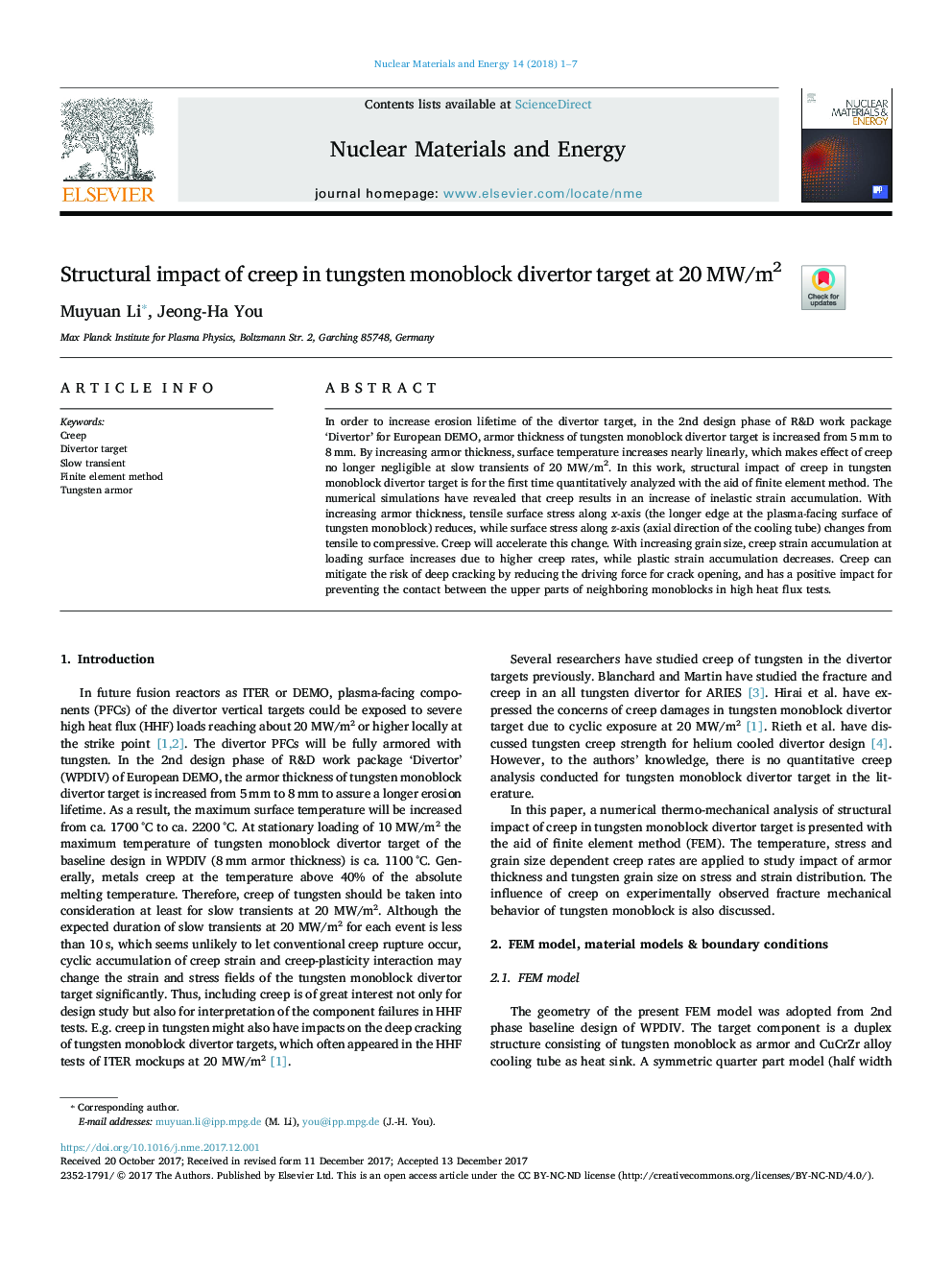| Article ID | Journal | Published Year | Pages | File Type |
|---|---|---|---|---|
| 7987359 | Nuclear Materials and Energy | 2018 | 7 Pages |
Abstract
In order to increase erosion lifetime of the divertor target, in the 2nd design phase of R&D work package 'Divertor' for European DEMO, armor thickness of tungsten monoblock divertor target is increased from 5â¯mm to 8â¯mm. By increasing armor thickness, surface temperature increases nearly linearly, which makes effect of creep no longer negligible at slow transients of 20 MW/m2. In this work, structural impact of creep in tungsten monoblock divertor target is for the first time quantitatively analyzed with the aid of finite element method. The numerical simulations have revealed that creep results in an increase of inelastic strain accumulation. With increasing armor thickness, tensile surface stress along x-axis (the longer edge at the plasma-facing surface of tungsten monoblock) reduces, while surface stress along z-axis (axial direction of the cooling tube) changes from tensile to compressive. Creep will accelerate this change. With increasing grain size, creep strain accumulation at loading surface increases due to higher creep rates, while plastic strain accumulation decreases. Creep can mitigate the risk of deep cracking by reducing the driving force for crack opening, and has a positive impact for preventing the contact between the upper parts of neighboring monoblocks in high heat flux tests.
Related Topics
Physical Sciences and Engineering
Energy
Nuclear Energy and Engineering
Authors
Muyuan Li, Jeong-Ha You,
